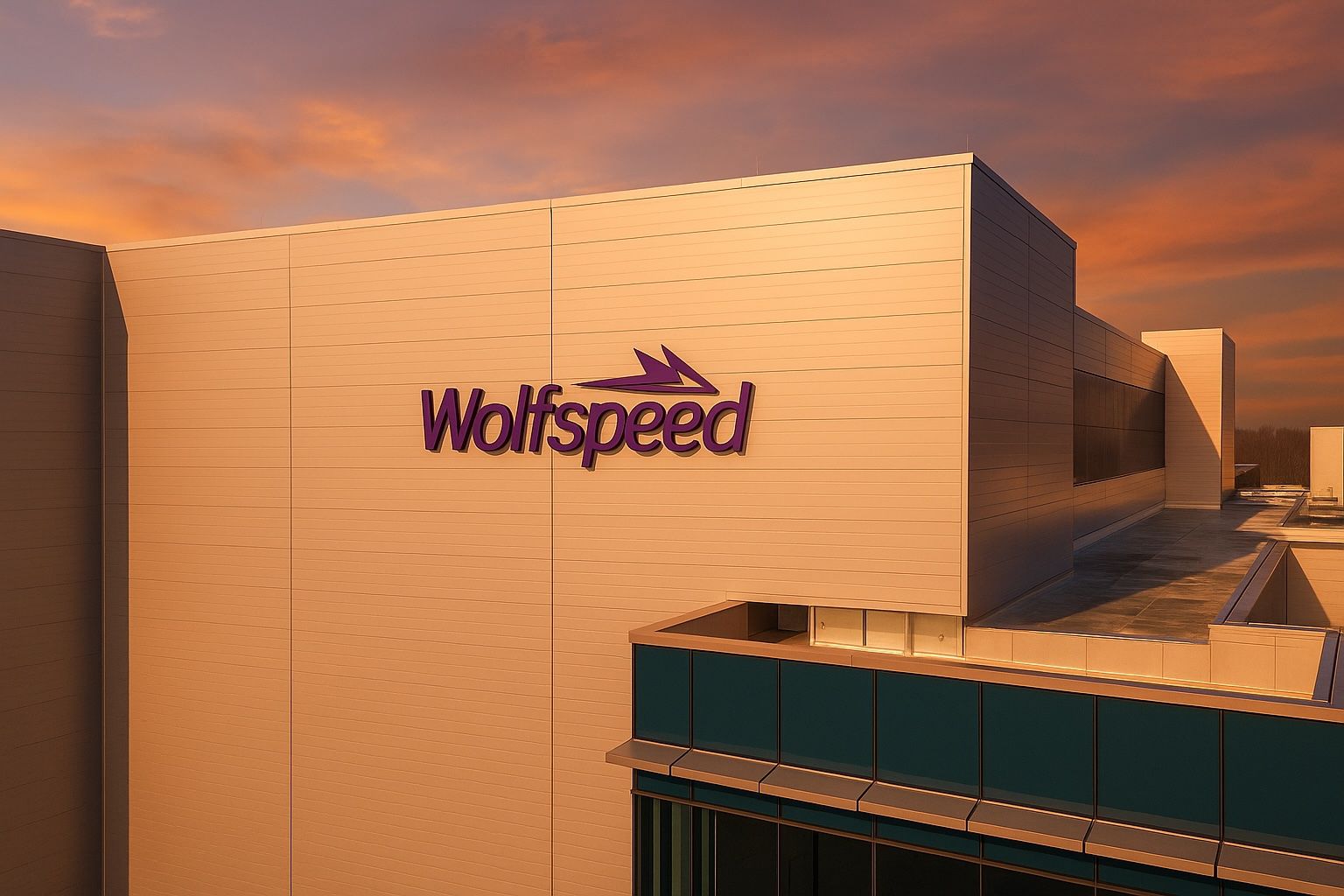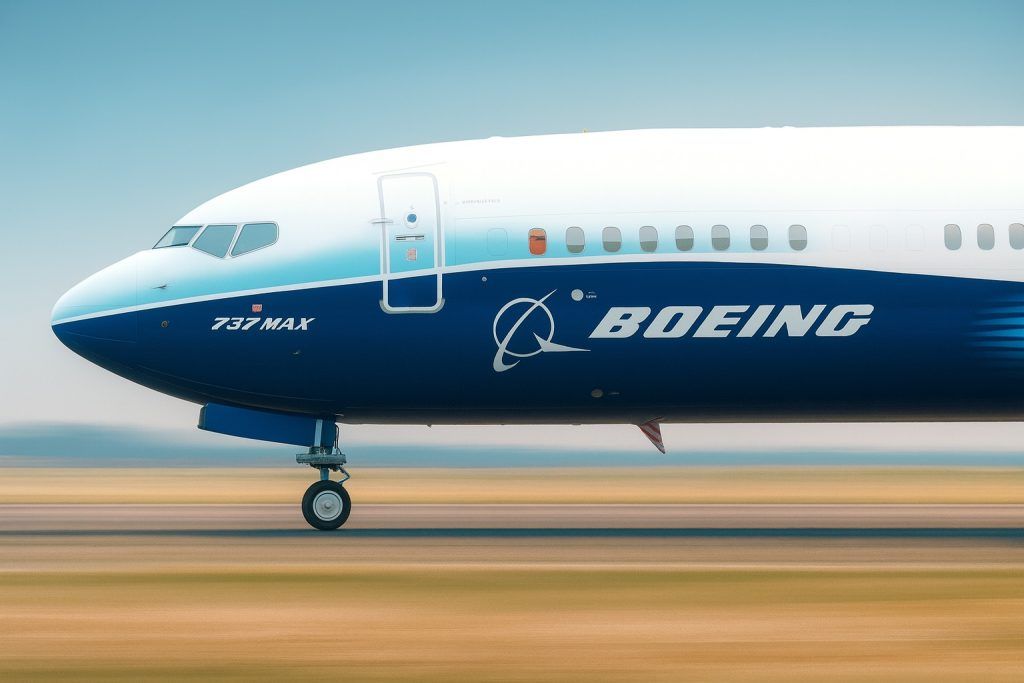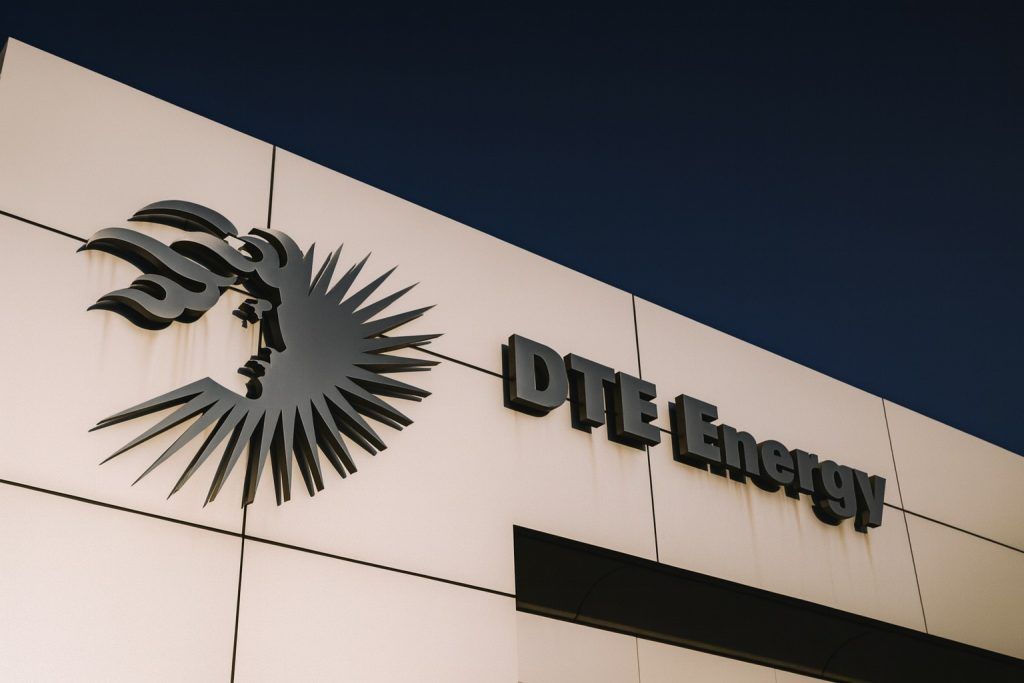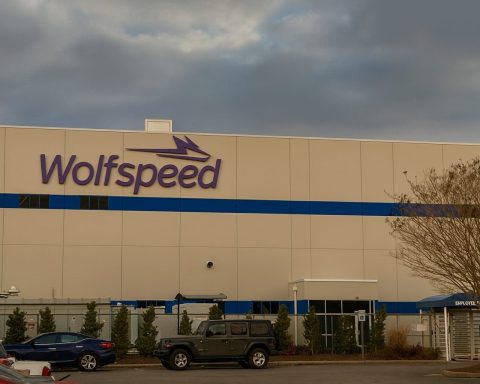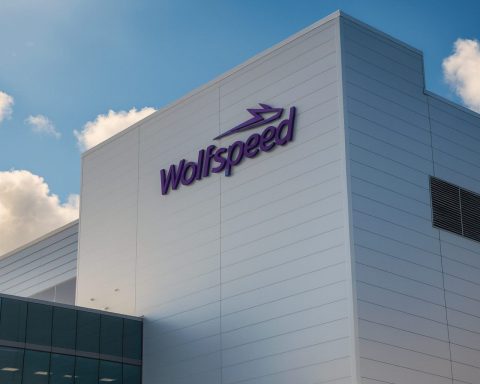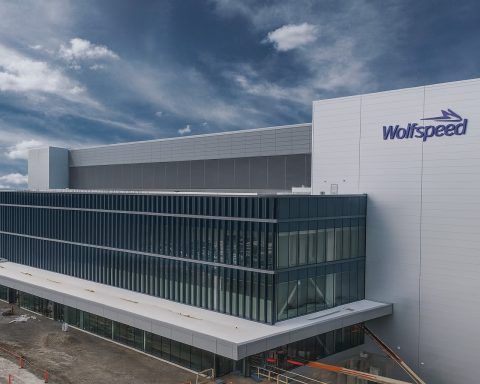- Volatile stock – WOLF surged ~48% to $1.82 on Sep 9 after a court approved its Chapter 11 plan [1], then slid to ~$1.20 by late September [2].
- Bankruptcy recap – Wolfspeed filed for Chapter 11 on June 30, 2025 and in September got court confirmation of a restructuring plan that will cut about 70% of its ~$6.5B debt [3] [4]. It now expects to emerge from Chapter 11 “in the next several weeks” (weeks of late Sept 2025) [5].
- Delaware conversion – The company will re-incorporate in Delaware on or about Sep 29, 2025 as part of its reorganization [6]. (An 8-K cautions that trading its stock during bankruptcy is “highly speculative” and existing equity may end up worthless [7].)
- Financials (FY2025) – FY2025 revenue fell to $758M (from $807M), with a massive GAAP net loss (about $11.39 per share vs. –$4.56 prior year) [8]. Q4FY2025 revenue was ~$197M (down from $201M) and the quarterly GAAP gross margin was –13% [9].
- Leadership and strategy – New CEO Robert Feurle (former MSI chief) was named in May 2025; on Sep 1, 2025 Wolfspeed’s board appointed industry veteran Gregor van Issum as CFO [10] [11]. In August it tapped onsemi EV executive Bret Zahn to head automotive, underscoring a push into EV markets [12].
- Product & growth – Wolfspeed launched its first commercial 200 mm silicon-carbide (SiC) wafers in Sept 2025, aiming to help customers scale EV and industrial devices [13] [14]. (Wolfspeed calls its US-based Mohawk Valley fab, which makes 200 mm SiC, “world-class” for automotive demand [15].)
- Industry outlook – Silicon-carbide chips power EVs, renewables and industrial equipment. The global “wide bandgap” market (SiC/GaN) is projected to grow ~15% annually through 2032 [16], driven by EV/industrial demand. EV shipments are forecast to rise ~30% per year from 2025–2030 [17].
- Risks & forecasts – Analysts warn WOLF is risky. Trading will likely move OTC if delisted, with “huge risk that its stock price will plummet” on delisting [18]. Chapter 11 restructuring will dilute current holders (existing equity largely wiped out [19]). The company itself cautions that equity holders “may experience a significant loss on their investment” [20]. Most Street analysts rate WOLF a Hold; price targets vary widely (one data aggregator shows an average ~$9.80, but that reflects large uncertainty [21]).
Stock Performance
Wolfspeed’s stock has been extremely volatile in 2025. It hit 27-year lows in March amid concerns over CHIPS Act funding, then rallied sharply after filing for restructuring. Notably, Sep 9, 2025 saw WOLF pop nearly 48% (to $1.82) when a U.S. court confirmed its pre-packaged Chapter 11 plan [22]. However, this rally proved short-lived. In the following weeks, the stock slid back into the low-$1 range. By Sept 26 it closed at about $1.21 [23] (down ~35% from its Sept 24 peak of $2.22), on very high volume (118M shares traded that day [24]).
Overall, Wolfspeed remains well below pre-crisis levels. Investors have been whipsawed by bankruptcy news: prices spiked on good news (debt reduction, new financing) and fell on reminders of huge losses and delisting risk. Market-watchers note that Wall Street consensus remains cautious – the average price target of analysts is far above today’s price, but reflects extreme uncertainty about the company’s future [25].
Recent News & Events
In mid-September 2025, Wolfspeed cleared major legal hurdles. On Sept 8, a BusinessWire press release (company IR) announced a court had approved its Chapter 11 reorganization plan [26]. CEO Robert Feurle commented, “We are pleased to reach this important milestone, which clears the path for us to complete our restructuring process” [27]. The plan will shred about 70% of Wolfspeed’s debt ($4.6B of a $6.5B load), and the company expects to exit bankruptcy “in the next several weeks” [28].
Following that, on Sept 24 (filed 25th), Wolfspeed disclosed in an SEC 8-K that it will legally convert from a North Carolina to a Delaware corporation effective around Sept 29, 2025 [29]. This corporate move was broadly reported (and joked about by traders) as a housekeeping step for the reorganization. The 8-K cautioned investors that trading Wolfspeed stock is “highly speculative” during the Chapter 11 cases and that shareholders “may experience a significant loss” [30].
Other recent developments: In late August, Wolfspeed named Bret Zahn (formerly onsemi VP) to lead its Automotive business, underscoring a focus on EV markets [31]. In July, it announced finance veteran Gregor van Issum as new CFO (effective Sept 1), who said he would ensure investors have “transparency and clarity, especially during this transformative period” [32]. And in product news, Wolfspeed launched its 200 mm SiC wafer product portfolio in Sept 2025 [33], which the company says will allow chipmakers to scale up EV and power devices (quoting CBO Dr. Cengiz Balkas: these “wafers are more than an expansion of diameter – [they] empower our customers to accelerate their device roadmaps” [34]).
Financial Results & Key Indicators
Wolfspeed’s top-line shrank modestly, but losses ballooned as its new fab ramped up and restructuring costs mounted. For fiscal Q4 2025 (ended June 29, 2025), Wolfspeed reported $197M revenue, roughly flat year-over-year [35]. A high point was its Mohawk Valley 200 mm fab (in New York), which generated ~$94.1M in the quarter (versus $41M a year earlier) [36]. But heavy fixed costs and under-utilization at the new facility drove gross margins negative: GAAP gross margin was –13% (non-GAAP –1%) [37], compared to slightly positive margins last year. The GAAP net loss was huge: –$4.30 per share in Q4 (versus –$1.39 a year ago) [38]. (On a non-GAAP basis, loss was “only” –$0.77 vs –$0.89 last year, helped by cost controls [39].)
For full-year FY2025, revenue was about $758M (down from $807M FY2024) [40]. GAAP net loss was $11.39 per share, up sharply from $4.56 a year prior [41]. Non-GAAP loss widened to –$3.32 (from –$2.59) [42]. The year’s numbers also include a $359M goodwill impairment and $417.6M in one-time restructuring charges [43]. In sum, Wolfspeed was burning cash at a rate far exceeding its sales, a point noted by analysts.
Looking at earlier quarters: In Q3 FY2025 (ended March 30, 2025), revenue was $185M (down from $201M a year before). Losses were also large: GAAP EPS –$1.86 (worse than expected), partly because operating loss grew to 105% of revenue (vs 53% prior year) [44] [45]. CEO Feurle and CFO van Issum emphasized that this quarter reflected Wolfspeed’s investments (and startup losses) in new fabs and GaN business, and that many costs would recur until production ramps. However, investors were unnerved. Reuters noted on May 8, 2025 that Wolfspeed’s guidance for FY2026 (expecting ~$850M sales) was well below analyst forecasts, contributing to an 11% post-earnings drop in WOLF stock [46] [47].
Company Developments: Leadership, Products & Partnerships
Wolfspeed has been revamping its leadership and product lineup during restructuring. In early 2025, new CEO Robert Feurle took charge (also becoming chairman). Alongside him, long-time exec David Emerson became COO (May 2025). Then the board hired Gregor van Issum as CFO (Sept 1, 2025), a finance veteran from ams-Osram and NXP. Van Issum pledged to help “create a capital structure that offers agility to respond to rapid shifts in the market” [48]. These moves signal that Wolfspeed is trying to rebuild with experienced chip-industry executives.
On the product side, a key highlight is the 200 mm silicon-carbide wafer launch (Sept 2025). Wolfspeed claims this will unlock “breakthrough scalability and improved quality” for power electronics makers [49]. CBO Dr. Cengiz Balkas said the new 200mm SiC “empowers our customers to accelerate their device roadmaps” [50]. Industry analysts agree that moving to 200mm substrates is vital: it can produce ~80% more chips per wafer and could cut per-unit cost by over half by 2030 [51]. In Q4, Wolfspeed’s Mohawk Valley 200mm fab did indeed boost sales (nearly doubling contribution from a year ago [52]), though high fixed costs hurt profits.
Wolfspeed is also strengthening its presence in EVs and clean energy. In Aug 2025 it tapped Bret Zahn (former onsemi EV leader) to run its Automotive unit [53]. CEO Feurle commented: “Our silicon carbide solutions are already powering some of the world’s most advanced EVs. Under Bret’s leadership, we will deepen our partnerships with global automakers and deliver the next wave of innovation” [54]. Wolfspeed cites partnerships (e.g. with GM, Mercedes) and government support (it was slated to receive a $750M CHIPS Act grant for SiC wafers, though that funding is now uncertain) as part of its strategy.
On the corporate front, besides the Delaware move, Wolfspeed is also looking to optimize operations. It has been closing underused facilities and cutting headcount (another ~180 jobs announced in March) to stem losses. The goal is to emerge leaner, with “the strongest capital structure in our industry,” as Feurle puts it [55].
Expert Commentary
Analysts and industry commentators are cautious. A Nasdaq.com article noted that Wolfspeed’s stock collapsed 94% in early 2025 on disappointing guidance and CHIPS Act uncertainty [56] [57]. Motley Fool analysts pointed out that Wolfspeed’s Q3 guidance was well below expectations, raising fears of bankruptcy. In fact, Wolfspeed did file for Chapter 11 on June 30, after the Q3 results.
Among bullish voices, some see long-term promise once the balance sheet is fixed. For example, one writer argues that slashing debt by 70% “significantly de-risk[s]” the company’s future [58] (and Wolfspeed will resume focusing on its “world-class” fabs and IP portfolio [59]). CEO Feurle himself has emphasized Wolfspeed’s “world-class greenfield and vertically integrated facility footprint” and a robust patent portfolio, suggesting confidence in regaining market leadership [60].
However, many experts stress the downsides. The Motley Fool warned there’s a “huge risk” the stock will plunge further if it’s delisted after Chapter 11 [61]. Investment site Simply Wall St notes that the restructuring “wipes out shareholder equity,” leaving old shareholders with only a tiny sliver of any new stock [62]. A TipRanks AI analysis similarly flagged Wolfspeed’s fundamentals as weak – “declining revenues, high leverage, and negative cash flows” – and rated the long-term technical outlook “bearish” [63]. In short, experts say Wolfspeed is betting on a future EV/clean-energy boom, but current shareholders face steep dilution and significant uncertainty.
Industry Outlook
The broader semiconductor industry is forecast to grow strongly in 2025 and beyond, but Wolfspeed operates in specific niches. According to Deloitte, global semiconductor sales should top $697 billion in 2025 (an all-time high), driven by AI and data-center chips [64]. Notably, chips for AI/data center have far outperformed those for automotive and other traditional markets in the last two years [65]. Wolfspeed’s focus (silicon carbide for EVs, renewables, industrial power) lies largely in the latter group, which has lagged the generative AI boom.
Still, the secular case for Wolfspeed’s market is strong. EV adoption is accelerating: the company cites forecasts of ~30% annual growth in EVs between 2025–2030 [66]. Electrification of vehicles, power grids, and industrial machinery requires more SiC/GaN devices (which are more efficient at high voltages than traditional silicon). Industry reports project the wide-bandgap (SiC+GaN) semiconductor market to grow at roughly 15% CAGR through 2032, from ~$2.1B in 2024 to over $6.2B by 2032 [67]. The automotive segment is expected to remain the largest end-user [68].
Moreover, Wolfspeed’s claim of being the only U.S.-based vertically integrated SiC supplier could be an advantage amid geopolitical tensions [69]. It argues that customers care about secure supply chains for critical auto and energy applications. Industry voices generally agree that large SiC wafer fabs are needed to bring costs down for EVs; Wolfspeed’s 200mm fab and wafer tech put it at the forefront of this trend [70] [71].
Outlook & Risks
Wolfspeed’s future hinges on its restructuring and the health of the EV/energy markets. If it successfully exits bankruptcy with a clean balance sheet, some analysts see upside from today’s levels (as optimistic forecasts suggest eventual profitability in a growing SiC market). Indeed, one fair-value estimate as of Sep 2025 was $3.17 per share [72], implying significant upside from ~$1.2. However, forecasts diverge widely, reflecting risk.
The immediate outlook depends on the Chapter 11 timeline and fundamentals. Wolfspeed expects to emerge imminently (around late Sept 2025). Post-emergence, it will have far less debt and interest expense. But the cash burn remains high, and the company must rapidly close the gap to profitability. Analysts will watch whether customers (especially in the auto industry) proceed with EV deployments or delay them, as the Reuters May report noted that slower-than-expected EV adoption and new auto tariffs were already hurting Wolfspeed’s sales [73]. The fate of federal funding (CHIPS Act) is another wildcard – if those subsidies slip away, Wolfspeed’s cost base could suffer.
Stock risks: As mentioned, equity holders are almost certain to be massively diluted. Wolfspeed itself warns that trading its stock is speculative and that shareholders “may experience a significant loss” [74]. After emergence, the stock may be delisted from the NYSE (it’s trading near the listing minimum), forcing trading over-the-counter, which often triggers further declines. Analyst commentary on TipRanks gives Wolfspeed a “Hold” consensus, and technical indicators remain bearish [75]. In short, investors say this is a turnaround story with a toxic balance sheet – potential reward exists, but the risks (bankruptcy execution, delisting, EV demand swings) are exceptionally high.
In summary: Wolfspeed’s 2025 has been dominated by its debt deal and Chapter 11 – events that sent the stock on a rollercoaster. The company is emerging leaner (and now Delaware-based) while trying to capitalize on surging EV and power electronics demand. For long-term investors, success depends on Wolfspeed turning those new 200mm SiC fabs into consistent growth and regaining profitability. Analysts’ quotes capture the dual narrative: CEO Feurle insists the firm is set to emerge stronger (“the path to become the global leader in SiC”) [76], while cautions are loud – current shareholders face “sizable dilution” and there’s “huge risk” to the stock’s value [77] [78].
Sources: Wolfspeed filings and press releases [79] [80]; Reuters and Bloomberg reports [81] [82]; industry analyses [83] [84] [85]; and financial news/commentary [86] [87] [88] [89].
References
1. www.reuters.com, 2. stockanalysis.com, 3. www.reuters.com, 4. www.stocktitan.net, 5. www.reuters.com, 6. www.stocktitan.net, 7. www.stocktitan.net, 8. www.tradingview.com, 9. www.tradingview.com, 10. www.cfodive.com, 11. www.cfodive.com, 12. www.stocktitan.net, 13. investor.wolfspeed.com, 14. investor.wolfspeed.com, 15. www.stocktitan.net, 16. www.fortunebusinessinsights.com, 17. www.wolfspeed.com, 18. www.nasdaq.com, 19. simplywall.st, 20. www.stocktitan.net, 21. www.marketbeat.com, 22. www.reuters.com, 23. stockanalysis.com, 24. stockanalysis.com, 25. www.marketbeat.com, 26. www.wolfspeed.com, 27. www.reuters.com, 28. www.reuters.com, 29. www.stocktitan.net, 30. www.stocktitan.net, 31. www.stocktitan.net, 32. www.cfodive.com, 33. investor.wolfspeed.com, 34. investor.wolfspeed.com, 35. www.tradingview.com, 36. www.tradingview.com, 37. www.tradingview.com, 38. www.tradingview.com, 39. www.tradingview.com, 40. www.tradingview.com, 41. www.tradingview.com, 42. www.tradingview.com, 43. www.tradingview.com, 44. www.gurufocus.com, 45. www.gurufocus.com, 46. www.reuters.com, 47. www.reuters.com, 48. www.cfodive.com, 49. investor.wolfspeed.com, 50. investor.wolfspeed.com, 51. www.wolfspeed.com, 52. www.tradingview.com, 53. www.stocktitan.net, 54. www.stocktitan.net, 55. www.reuters.com, 56. www.nasdaq.com, 57. www.nasdaq.com, 58. www.nasdaq.com, 59. www.tradingview.com, 60. www.tradingview.com, 61. www.nasdaq.com, 62. simplywall.st, 63. www.tipranks.com, 64. www.deloitte.com, 65. www.deloitte.com, 66. www.wolfspeed.com, 67. www.fortunebusinessinsights.com, 68. www.fortunebusinessinsights.com, 69. www.wolfspeed.com, 70. www.wolfspeed.com, 71. investor.wolfspeed.com, 72. simplywall.st, 73. www.reuters.com, 74. www.stocktitan.net, 75. www.tipranks.com, 76. www.reuters.com, 77. www.nasdaq.com, 78. simplywall.st, 79. www.wolfspeed.com, 80. investor.wolfspeed.com, 81. www.reuters.com, 82. www.reuters.com, 83. www.wolfspeed.com, 84. www.fortunebusinessinsights.com, 85. www.deloitte.com, 86. www.cfodive.com, 87. www.nasdaq.com, 88. simplywall.st, 89. www.tipranks.com
